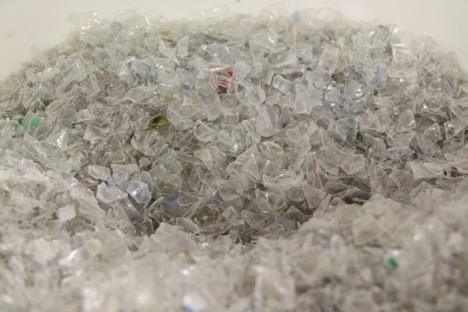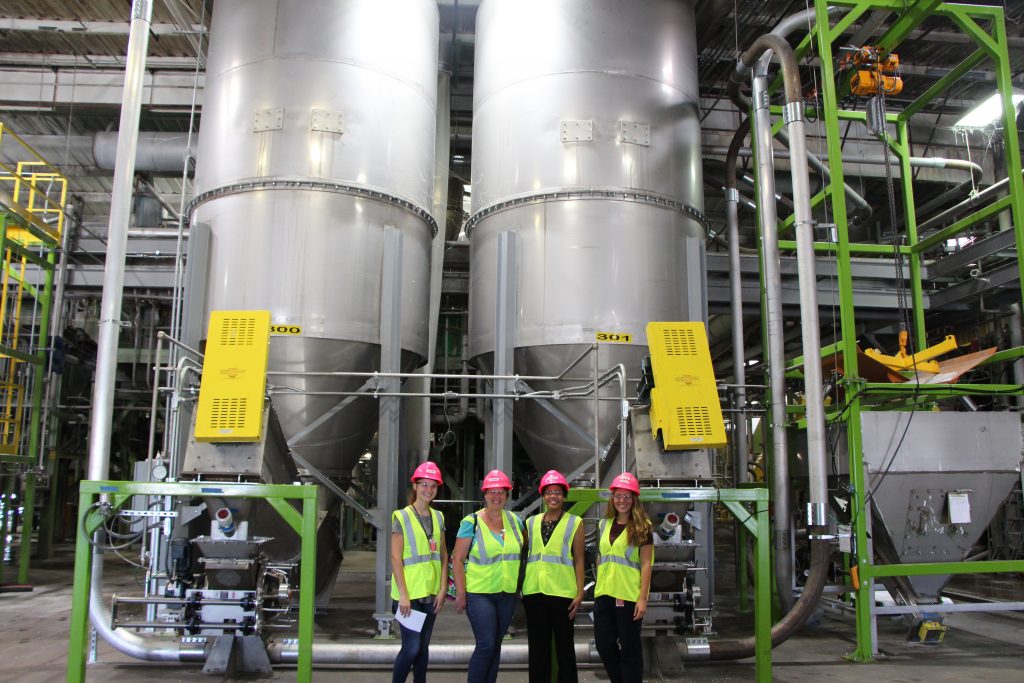Hi everyone, this post is going to be divided into three main sections. Section one is an update on my presentation at the RAMMs section meeting last week regarding Coal Combustion Residuals. The second section outlines my experience visiting Clear Path Recycling last week (the bulk of this post), and the third is a brief update on my overarching project regarding unincorporated area residential curbside recycling. So let’s jump in!
Section 1: Like I mentioned in my previous post, last week I had the opportunity to present to the Recycling and Materials Management Section (RAMMS) on Coal Combustion Residual Reuse and Recycling. The meeting went really well! People were very engaged with the material, asked questions, and seemed happy with my presentation which was a huge relief for me, as I was pretty intimidated to do it. I’ve hyperlinked a link to the slide deck I presented at the meeting. It looks lower quality than the one I presented because I had to transfer the powerpoint over to google slides in order to link it to this post. Additionally, some of the images did not transfer or look distorted, but you get the idea.
Section 2: So, what are some other updates from last week? I also had the opportunity to visit the biggest plastics recycler I’ve been to in my time here at NCDEQ. The company’s name is Clear Path Recycling. At Clear Path myself and three of my coworkers were taken on an tour of the entire facility. First, we walked through the outside portion of the facility-The grounds that hold the baled plastic materials. These bales are tagged based on what company brings them in. From here, the plastics are put through machines that separate the materials from each other, and these plastics (and other materials that are mixed in) are put through optical sorters to separate the plastics by different types as I have mentioned before. Plastics are also brought through a magnet system to eliminate materials such as aluminum. The plastic material is washed and put through a float-sink tank, and then shredded to create the plastic flake (in the simplest terms). Clear Path is a PET recycler (what water bottles are made of) so they need to separate this type of plastic from others that may have been incorporated into the waste stream.
 Photo Courtesy of Mindy Love (NCDEQ)
Photo Courtesy of Mindy Love (NCDEQ)
An engineer on site told us about the operations of the different machinery and showed us the control panels. We also had the opportunity to go into the lab where samples of the shredded plastic material (clean flake) are tested for contaminants. You can see an image of this material above.
I’ve talked about similar places before, but this one was HUGE. And I wanted an excuse to drop in this picture of us stylish ladies (below to the right) from the NCDEQ. SAFETY FIRST people! The primary reason we visited are the silos and technology behind us: the Dirty Flake Unloaders (DFUs).
One of the largest responsibilities of NCDEACS staff is to award and manage grants to help recycling businesses and/or local governments operate more effectively and efficiently and increase the size of their recycling programs. As part of grant management, the staff person responsible for the grant must go and visit the grantee once the project is complete to make sure the money is used for what it is supposed to be used for, but additionally to help the grantee with any further issues and to sign off on the grant contract.
Clear Path Recycling produces clear flake- plastic flake without color, as you can see from the earlier image. Behind us in the photograph are the two silos that the company installed with their grant funds from NCDEQ to reincorporate off-quality product back into the wash stream in an effort to make it higher quality (less contaminated). You can’t see them in this photo, but along with the silos are various tubes and blowers. Essentially, when a batch of flake comes out with too many contaminates in the final product, the company can now re-wash and sort the material to get to their desired product quality.
Section 3: An update on my progress with the unincorporated area recycling: I’ve gathered responses from most of the independent haulers on our list. The big fish that I’m currently tackling through various means is that of getting the bigger corporate haulers to respond with their information. It is hard to contact them except through a call center unless you know someone who works there, and they operate in various states across the country. They have a lot of data to manage and it isn’t always easy to pull, but rest assured I’m working on it.
Sorry my posts are always so scrambled! I’ve been doing a lot here and I want to give you a feel of what it’s like.
Thanks for reading as always,
Tara

